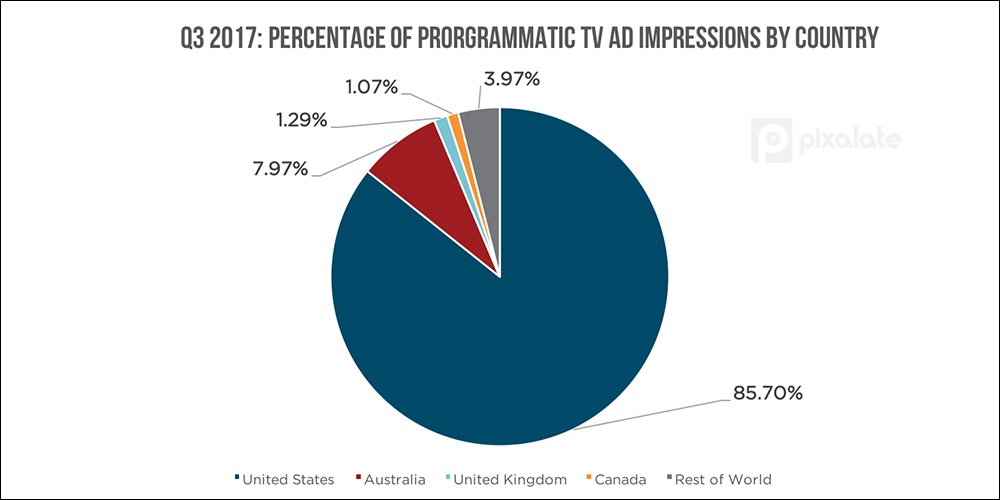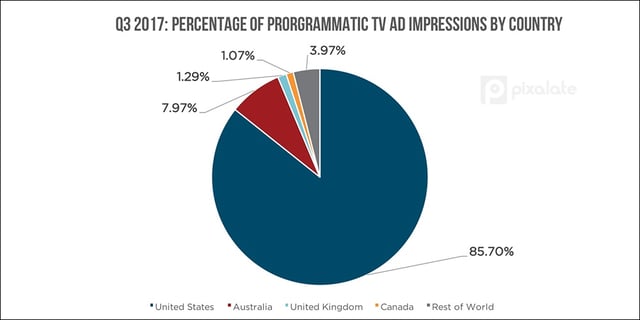
This week's review of ad fraud and quality in the digital advertising space.

New data from Pixalate shows that the United States accounts for over 85% of worldwide programmatic TV advertising impressions. "Pixalate measured worldwide Connected TV/OTT programmatic ad impressions throughout 2017 for this study," the blog post reads. "The United States easily leads the way, with 85.7% of all Q3 2017 programmatic TV ad impressions being served in that region."

Pixalate examined IPv6 data and shared which ISPs support the most IPv6-enabled traffic, and which devices and channels support the most IPv6-enabled advertising impressions. "Nearly two-thirds (61.6%) of programmatically-served mobile app ad impressions are delivered to an IPv6-enabled device, according to Pixalate’s data," the blog post reads. "That’s the highest rate among all major devices."

The Wall Street Journal has reported on domain spoofing activity uncovered by Adform. The article reads: "[T]he fraudsters behind the ... scheme created more than 34,000 different domain names and more than a million different URLs, many designed to attempt to fool advertisers into thinking they were buying ad inventory from big-name publishers such as the Economist, the Financial Times, The Wall Street Journal and CNN. It is a tactic known in the industry as 'domain spoofing.'"

Several months ago, Digiday reported that the Financial Times (FT.com) had discovered high levels of domain spoofing against its site, with 25 exchanges misrepresenting access to its inventory, per the report.
As a follow-up to that story, Digiday now reports that "24 of the 25 exchanges ha[ve] stopped spoofing the FT’s domain since the publisher called out the tech vendors that were selling the mislabeled inventory," citing Jessica Barrett, global head of programmatic at the Financial Times.

"The digital ad industry has had something of a rough year, with concerns emerging—and re-emerging—about brand safety, ad transparency, viewability and fraud," wrote eMarketer. The article cites data from a survey conducted by Singular on what mobile app publishers are doing to combat ad fraud. Identifying time-to-install anomalies and geographic outliers are the two leading methods worldwide, per the article.
Sign up for our blog to stay updated with new stats, trends, and analysis on digital ad fraud.
*By entering your email address and clicking Subscribe, you are agreeing to our Terms of Use and Privacy Policy.
These Stories on Weekly Recaps
*By entering your email address and clicking Subscribe, you are agreeing to our Terms of Use and Privacy Policy.

Disclaimer: The content of this page reflects Pixalate’s opinions with respect to the factors that Pixalate believes can be useful to the digital media industry. Any proprietary data shared is grounded in Pixalate’s proprietary technology and analytics, which Pixalate is continuously evaluating and updating. Any references to outside sources should not be construed as endorsements. Pixalate’s opinions are just that - opinion, not facts or guarantees.
Per the MRC, “'Fraud' is not intended to represent fraud as defined in various laws, statutes and ordinances or as conventionally used in U.S. Court or other legal proceedings, but rather a custom definition strictly for advertising measurement purposes. Also per the MRC, “‘Invalid Traffic’ is defined generally as traffic that does not meet certain ad serving quality or completeness criteria, or otherwise does not represent legitimate ad traffic that should be included in measurement counts. Among the reasons why ad traffic may be deemed invalid is it is a result of non-human traffic (spiders, bots, etc.), or activity designed to produce fraudulent traffic.”

